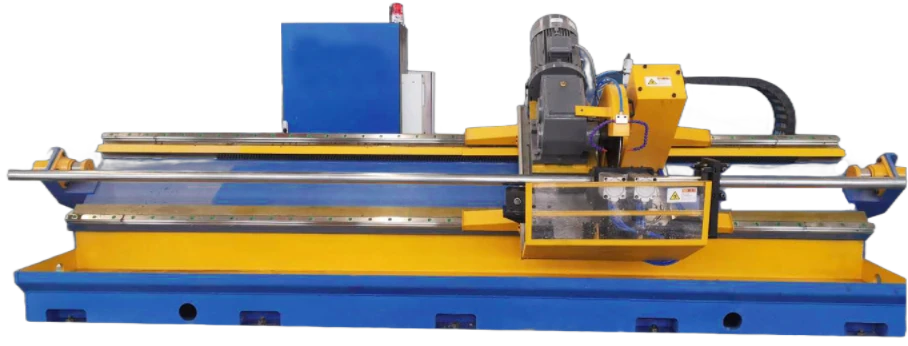Advancements in PPR Pipe Extrusion Technology and Production Techniques
PPR Pipe Extrusion Line An Overview
The PPR (Polypropylene Random Copolymer) pipe extrusion line is an essential technology in the production of piping systems used in various applications, most notably in plumbing and water supply systems. This article explores the intricacies of PPR pipe extrusion lines, the benefits of PPR pipes, and the manufacturing processes involved.
What is PPR?
Polypropylene Random Copolymer (PPR) is a type of thermoplastic polymer that is widely used for piping systems due to its excellent chemical resistance, low thermal conductivity, and high durability. PPR pipes are particularly favored for hot and cold water supply as they can withstand high temperatures without deforming, making them an ideal choice for both residential and industrial applications.
The PPR Pipe Extrusion Process
The production of PPR pipes begins with the extrusion process. The extrusion line typically consists of several critical components, including the extruder, die head, cooling system, and winding or cutting machinery. The following outlines the key stages of the extrusion process
1. Material Preparation The first step involves preparing the material. PPR pellets or granules are fed into the extruder. These polymers must meet specific quality standards to ensure the final product’s performance.
2. Extrusion Once the material is in the extruder, it is subjected to controlled heat and pressure. The thermoplastic undergoes melting and becomes a viscous, homogeneous mass. This process is critical for achieving a uniform pipe with consistent quality.
3. Die Formation The molten PPR is then shaped using a die head. The design of the die directly impacts the dimensions and wall thickness of the final product. Advanced die technology allows for precise control over these parameters, ensuring that the produced pipes meet industry standards.
4. Cooling After exiting the die, the newly formed PPR pipe is rapidly cooled using a water bath or air cooler. This crucial step solidifies the pipe and helps retain its shape. Proper cooling is essential to avoid warping or other deformations in the final product.
5. Cutting and Winding Once cooled, the pipes are cut to the desired lengths. They can be either coiled or straight, depending on the intended use and packing requirements. Automation in this stage enhances efficiency and precision.
ppr pipe extrusion line

Advantages of PPR Pipes
The adoption of PPR pipes is growing due to numerous advantages
- Durability and Longevity PPR pipes are highly resistant to corrosion, scaling, and chemical degradation. They have a long life span, often exceeding 50 years under normal conditions.
- Temperature Resistance PPR pipes can endure high temperatures up to 95 degrees Celsius, making them suitable for both hot and cold water applications.
- Low Thermal Conductivity PPR's lower thermal conductivity means that heat loss is minimal, which can lead to energy savings in heating systems.
- Ease of Installation They are lightweight and can be easily connected using heat fusion methods, which helps reduce labor costs and time in installation.
- Cost-Effective Although the initial investment may be slightly higher than traditional metal pipes, the long-term savings due to lower maintenance and replacement costs make PPR pipes a cost-effective solution.
Future of PPR Pipe Extrusion Lines
As the demand for reliable and efficient piping systems increases globally, the technology behind PPR pipe extrusion lines continues to evolve. Manufacturers are focusing on improving the efficiency of extrusion processes, optimizing energy consumption, and integrating smart technologies that allow for real-time quality control during production. The adoption of sustainable practices, such as recycling PPR waste and using eco-friendly materials, is also gaining traction.
In conclusion, PPR pipe extrusion lines play a crucial role in the production of modern piping systems, combining advanced technology with material science to deliver high-quality products. The benefits of PPR pipes make them a preferred choice in various applications, and as technology advances, we can expect further improvements in manufacturing efficiency and product performance. The future of the PPR industry looks promising, marked by innovation and sustainability.
-
High Frequency Straight Seam Welded Pipe Production Line-BzZhou Xinghua Machinery Equipment Manufacturing Co., LTD.|line pipe steel&welded gas pipeNewsJul.30,2025
-
High Frequency Straight Seam Welded Pipe Production Line-BzZhou Xinghua Machinery Equipment Manufacturing Co., LTD.|High Precision&Automated SolutionsNewsJul.30,2025
-
High Frequency Straight Seam Welded Pipe Production Line - BzZhou Xinghua Machinery Equipment Manufacturing Co., Ltd.NewsJul.30,2025
-
High Frequency Straight Seam Welded Pipe Production Line-BzZhou Xinghua Machinery Equipment Manufacturing Co., LTD.|Precision Welding, High EfficiencyNewsJul.30,2025
-
High Frequency Straight Seam Welded Pipe Production Line|BzZhou Xinghua|Precision Welding&EfficiencyNewsJul.30,2025
-
High Frequency Straight Seam Welded Pipe Production Line - BzZhou Xinghua|Precision Engineering&EfficiencyNewsJul.30,2025


